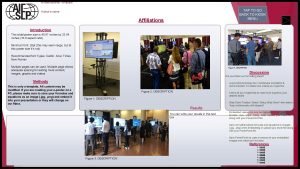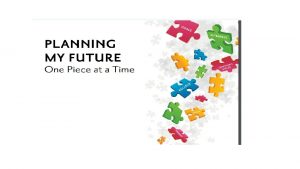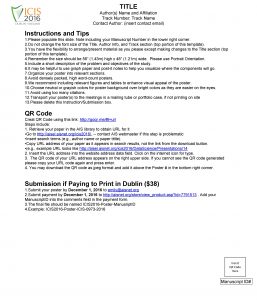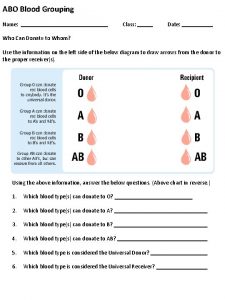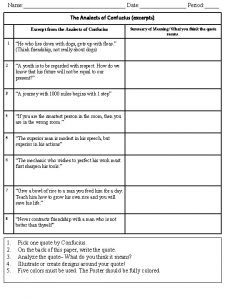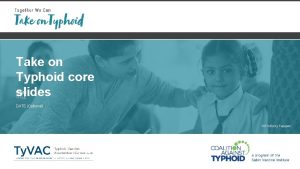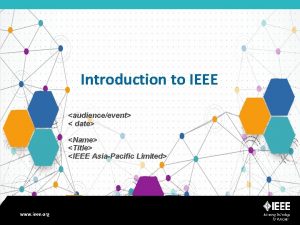Name Credentials Affiliation Location Date Presentation Overview I






































- Slides: 38

Name, Credentials Affiliation Location Date

Presentation Overview I. What is the problem? II. What is Dissemination and Implementation Science? III. What is RE-AIM? IV. What is an example of using RE-AIM? V. What are common misconceptions? VI. How has RE-AIM evolved over the last 20 years?

What is the problem? Research-Practice Gap It takes 17 years for research to reach practice. Only 14% of research reaches a target recipient. Only 18% of administrators and practitioners report using evidence-based practices frequently. Balas EA, Boren, SA. Managing clinical knowledge for healthcare improvement. In Yearbook of Medical Informatics. 2000. Chagnon F, et al. Comparison of determinants of research knowledge utilization by practitioners and administrators in the field of child and family social services. Implementation Science. 2010: 5: 41.

Even if 100% effective, impact depends on: (1) Adoption (2) Training (3) Fidelity (Implementation) (4) Access (Reach) (5) Sustainability (Maintenance) 50% threshold for each step=. 5*. 5*. 5= 3% benefit Traditional, highly-controlled RCTs versus real-world settings. “Voltage drop” of effectiveness. What is most relevant to the stakeholders? Rothwell PM. External validity of randomised controlled trials. Lancet 2005; 365: 82 -93.

What is Dissemination and Implementation Science? Dissemination: Information sharing Implementation: Intervention integration Pragmatic: Under “usual” conditions – relevant to stakeholders AND rigorous. Illustration by Dave Cutler

Theories Frameworks Models Tabak RG et al. Bridging Research and Practice: Models for Dissemination and Implementation Research Am J Prev Med, 2012, 43: 337 -350.

https: //www. cdc. gov/prc/stories-prevention-research/stories/dissemination-and-implementation. htm

Where to find D&I models www. dissemination-implementation. org

What is RE-AIM?

RE-AIM Facilitate translation of research to practice. Balance internal and external validity. Emphasize representativeness. Address multi-level factors: individual, organizational, system: experimental and observational.

RE-AIM Intervention + Implementation Goals • Adopted broadly. • Sustained implementation at reasonable cost. • Reaches large numbers of people. • Replicable and long-lasting outcomes.

Pragmatic Use Technical Definition The absolute number, proportion, and representativeness of individuals willing to participate in a given initiative, and the reasons why (qualitative). REACH WHO is intended to benefit and who actually participates or is exposed to the initiative? Glasgow RE, Estabrooks PE. Pragmatic Applications of RE-AIM for Health Care. . . Prev Chronic Dis 2018; 15: 170271. DOI: http: //dx. doi. org/10. 5888/pcd 15. 17027

Pragmatic Use Technical Definition The impact of an initiative on outcomes, including potential negative effects, heterogeneity, quality of life, and economic outcomes as well as the reasons why (qualitative). EFFECTIVENESS WHAT is the most important benefit you are trying to achieve and what is the likelihood of negative outcomes? Glasgow RE, Estabrooks PE. Pragmatic Applications of RE-AIM for Health Care. . . Prev Chronic Dis 2018; 15: 170271. DOI: http: //dx. doi. org/10. 5888/pcd 15. 17027

Pragmatic Use Technical Definition The absolute number, proportion, and representativeness of settings and agents willing to initiate a program, and the reasons why (qualitative). ADOPTION WHERE is the program applied and WHO applied it? Glasgow RE, Estabrooks PE. Pragmatic Applications of RE-AIM for Health Care. . . Prev Chronic Dis 2018; 15: 170271. DOI: http: //dx. doi. org/10. 5888/pcd 15. 17027

Pragmatic Use Technical Definition Fidelity to the intervention protocol, and including adaptations, time, and cost as well as the reasons why (qualitative). IMPLEMENTATION HOW consistently was the program delivered, how was it adapted, how much did it cost, and WHY did the results come about? Glasgow RE, Estabrooks PE. Pragmatic Applications of RE-AIM for Health Care. . . Prev Chronic Dis 2018; 15: 170271. DOI: http: //dx. doi. org/10. 5888/pcd 15. 17027

Pragmatic Use Technical Definition The extent to which a program becomes institutionalized at the setting level or sustained at an individual level as well as the reasons why (qualitative). MAINTENANCE WHEN was the program operational and how long are the results sustained? Glasgow RE, Estabrooks PE. Pragmatic Applications of RE-AIM for Health Care. . . Prev Chronic Dis 2018; 15: 170271. DOI: http: //dx. doi. org/10. 5888/pcd 15. 17027

What’s an example of using RE-AIM?

Design=Quasi-experimental trial (n=5911) in cooperative extension system Target population=Adults with no contraindications for moderate PA Intervention=8 -week group dynamics program Control=Participants served as own control Estabrooks et al. Determining the Impact of Walk Kansas. ABM, 2008, 36: 1 -12

5911 adults participated in Walk Kansas 590, 372 adults in participating counties 1% of eligible population Participants more likely to be: • Women • Older • Meeting PA recommendations Estabrooks et al. Determining the Impact of Walk Kansas. ABM, 2008, 36: 1 -12

Per week + 177 min + 107 min Estabrooks et al. Determining the Impact of Walk Kansas. ABM, 2008, 36: 1 -12

• 105 eligible counties. • Year 1: 48 counties participated. • By year 5: +41 counties participated. • Initially, counties with agents not meeting PA recommendations were less likely to adopt. Estabrooks et al. Determining the Impact of Walk Kansas. ABM, 2008, 36: 1 -12

No data reported but refers to consistent delivery and/or adaptations across counties. Estabrooks et al. Determining the Impact of Walk Kansas. ABM, 2008, 36: 1 -12

Individual Level: Sustained an increase of moderate PA 6 months after program was complete. Setting Level: Sustained delivery for subsequent 4 years. Estabrooks et al. Determining the Impact of Walk Kansas. ABM, 2008, 36: 1 -12

What are common misconceptions? #1: Only for evaluation #2: Only for quantitative #3: Mandates that all dimensions are equally important #4: Rigid timepoints for maintenance

#1: Only for evaluation Mapping Strategies to RE-AIM Outcomes CDC 1 U 18 DP (Heelan/Hill MPI)

#2: Only for quantitative “Qualitative methods can help researchers look ‘under the hood’…” --Holtrop, et al. 2018 doi. org/10. 1186/s 12913 -018 -2938 -8

Qualitative Approach to RE-AIM Holtrop, Rabin, & Glasgow. 2017. Qualitative approaches to use of the RE-AIM framework: rationale and methods.

#3: Mandates all dimensions equally important “Practical application of selected RE-AIM dimensions can be done by specifying in advance what impact and outcomes are most important and by providing a rationale for the dimensions that are and are not addressed. ” --Glasgow and Estabrooks, 2018, Prev Chronic Dis 2018; 15: 170271. DOI: http: //dx. doi. org/10. 5888/pcd 15. 17027

#3: Mandates all dimensions equally important Relative Importance Downey et al. 2012. Adoption Decisions and Implementation of a Community-Based Physical Activity Program : A Mixed-Methods Study

#4: Rigid timepoints for maintenance THEN • 6 months for individual level outcomes. • 2 years for setting or staff level outcomes. NOW • Operationalize in different ways. • Align w/intervention and research question. Continual updates + advancement

How has RE-AIM evolved over the last 20 years? 700+ articles 2, 400+ citations New content areas Costs and resources Adaptations Patient-centered outcomes research . Glasgow, RE, et al. Front Public Health. 2020; 7, 64. Holtrop et al. BMC Health Serv Res. 2018 Mar 13; 18(1): 177. Gaglio et al. The RE-AIM Framework…AJPH. 2013; 103: 38 -46

More complexity and creativity More transparent reporting on all items, especially adaptations and unintended consequences. Increase study of relationships among outcomes on different RE-AIM dimensions. Use mixed methods to fully understand implementation issues and combine results on multiple dimensions to provide estimates of overall impact. Collect data on representativeness and reason for participation/nonparticipation at both the individual (reach) and setting (adoption) levels

Combining RE-AIM with other models, especially Pragmatic, Robust, Implementation and Sustainability (PRISM) Model - to assess relevant contextual factors

Evolution: Lessons Learned • One of the most widely used frameworks. • Often mandated by funders. • Expanded the original model to focus on adaptions and sustainability. • Emphasize qualitative methods to understand “how” and “why. ” • Capture costs. • Understand health equity issues. • Encourage pragmatic use. • Package RE-AIM for use by non-researchers. • Integrate RE-AIM with other models. Glasgow et al. RE-AIM Planning and Evaluation Framework: Adapting to New Science and Practice with a 20 -Year Review. Front Public Health. 2019; 7: 64.

Summary • Outcomes framework. • For planning, implementation, dissemination, evaluation. • Observational, efficacy, effectiveness, and implementation projects. • Evolution: new issues and challenges

• Glasgow RE, Vogt TM, Boles SM. Evaluating the public health impact…the RE-AIM framework. Am J Public Health. 1999 Sep; 89(9): 1322 -7. • Estabrooks PA, Glasgow RE. Translating effective clinic-based physical activity. . . Am J Prev Med. (2006) 31 (4 Suppl. ): S 45– 56. doi: 10. 1016/j. amepre. 2006. 019 • Shoup JA, et al. Network analysis of REAIM framework. Transl Behav Med. (2015) 5: 216– 32. doi: 10. 1007/s 13142 -014 -0300 -1 Key RE-AIM References • Ory MG, et al. Perceived utility of the RE-AIM framework…for older adults. . . Front Public Health. (2015) 2: 143. doi: 10. 3389/fpubh. 2014. 00143 • Gaglio B, Shoup JA, Glasgow RE. The RE-AIM framework: a systematic review of use over time. Am J Public Health. (2013) 103: e 38– 46. doi: 10. 2105/AJPH. 2013. 301299 • Harden, et al. Fidelity to and comparative results across behavioral interventions…: a systematic review. Syst Rev. (2015) 4: 155. doi: 10. 1186/s 13643 -015 -0141 -0 • Glasgow RE, Estabrooks PE. Pragmatic Applications of RE-AIM for Health Care. . . Prev Chronic Dis 2018; 15: 170271. DOI: http: //dx. doi. org/10. 5888/pcd 15. 170271 • Glasgow, RE, et al. (2019). RE-AIM Planning and Evaluation Framework: 20 -Year Review. Front Public Health, 7, 64. doi: 10. 3389/fpubh. 2019. 00064 Special issue on RE-AIM in Frontiers of Public Health in 2020: Contains >13 articles.

Additional Resources at www. re-aim. org • • • FAQ’s Guidance on application Searchable list of 700+ article abstracts. Calculators, checklists, tools. Webinars, upcoming events, blogs.

Discussion or expansion for your specific presentation needs.
 Affiliation poster presentation
Affiliation poster presentation Author's affiliation
Author's affiliation Affiliation poster presentation
Affiliation poster presentation Name teachers name class date
Name teachers name class date What is your teacher name
What is your teacher name Name date class teacher
Name date class teacher Dept. name of organization
Dept. name of organization Author name and affiliation
Author name and affiliation Author name and affiliation
Author name and affiliation Name and affiliation
Name and affiliation Dept. name of organization (of affiliation)
Dept. name of organization (of affiliation) Name with affiliation
Name with affiliation Name with affiliation
Name with affiliation Name and affiliation
Name and affiliation Affiliation abstract
Affiliation abstract Name and affiliation
Name and affiliation Dividend payment
Dividend payment What is ex dividend date
What is ex dividend date Name of presentation company name
Name of presentation company name Name of presentation company name
Name of presentation company name Name 3 points
Name 3 points Areanna ai
Areanna ai A cross country skier moves from location a to location b
A cross country skier moves from location a to location b Location planning and analysis summary
Location planning and analysis summary Name class date
Name class date By name title date
By name title date Name date period
Name date period Name title date
Name title date Name title date
Name title date The giver utopia
The giver utopia By name title date
By name title date Session title
Session title Slidetodoc.com
Slidetodoc.com By name title date
By name title date Name title date
Name title date By name title date
By name title date By name title date
By name title date By name title date
By name title date By name title date
By name title date


